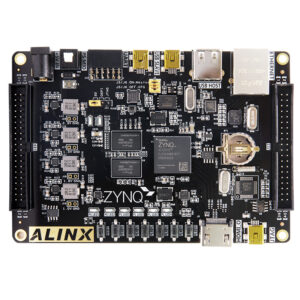When we want to operate an electronic equipment, we use a switch which will stay the way you leave it. And it works on the principle of a trigger switch or rocker switch i.e. if we turn on the lights, and it stays on; turn it off and it stays off. But to control it non-manually and from a remote location, a switch is not the best choice. And it here that a DPDT Relay comes into picture.
Again a Microcontroller cannot handle higher power requirements. A Relay can be used to control the power to a normal AC outlet using 5VDC control. Now we will be giving you an introduction to a DPDT 5V Relay as shown in figure 1.
Introduction to a Relay
A Relay is an electrically operated switch. But there are two ways by which a Relay works. One is Electromechanical Relays and the other is Solid-State Relays.
In Electromechanical Relays, the switching mechanism is carried out with the help of the electromagnet. And Solid-State Relays have active semiconductor devices that uses light instead of magnetism to actuate a switch.
The main operation of a relay comes in places where only a low-power signal can be used to control a circuit. It is also used in places where only one signal can be used to control a lot of circuits.

But what is a DPDT Relay?
The “DP” means that it is double pole, so it switches both sides of the circuit, and the “DT” means that rather than just turning on and off, it switches from one set of wires to another. So in a DPDT relay, when the control circuit is off, the relay will turn on either circuit A or circuit B. It is the user’s choice, but it must be determined before the relay is installed.
Working of a DPDT switch
A DPDT Switch has 6 terminals as shown in figure 2. Terminals 3 and 4 represent a switch. These terminals receive the power necessary to drive the loads on terminals 1 and 5 and 2 and 6. Terminals 3 can flip between terminals 1 and 5. So if a Lamp is connected to terminal 1 and a LED is connected to terminal 5, terminal 3 can switch between Lamp and LED. The same condition is

true for terminal 4. Terminal 4 can flip between terminals 2 and 6. So if a Buzzer is connected to terminal 2 and a Speaker is connected to terminal 6, terminal 4, can switch between the Buzzer and the Speaker. A DPDT switch has 2 input switches which can each connect to one of the two. Therefore, it can control 4 different circuits, or devices, with 2 switches.
An example circuit of a DPDT switch is shown below:

With the circuit as shown in figure 3, we can see that we can flip between 4 different circuits with 2 switches. When the DPDT’s switch is flipped one way, the lamp and buzzer will be on. When it is flipped the other way, the LED and the speaker will be on.
Simple working of an Electromagnetic Relay

The figure 4 shows an Electromagnetic Relay that consists of two separate and completely independent circuits. An iron core is surrounded by a coil. As shown, the power source is given to the electromagnet through a control switch and through contacts to the load. When current starts flowing through the control coil, the electromagnet starts energizing and thus intensifies the magnetic field. Thus the armature (blue colour) starts to be attracted and thus closes the contacts causing a short circuit for the power to the load. On the other hand, if the relay was already de-energized when the contacts were closed, then the contact move oppositely and make an open circuit.
As soon as the coil current is off, the movable armature will be returned by a force back to its initial position. This force will be almost equal to half the strength of the magnetic force. This force is mainly provided by two factors. They are the spring and also gravity.
This 5V Relay rated up to 12V and handles 1A at 120VAC or 2A at 24VDC. Coil current draw is about 40mA at 5V also, the coil is not polarity sensitive.
Thank you for reading this blog,
For more information about the product please visit: http://www.tenettech.com/product/612/beefcake-relay-control-kit
For more information about other products please visit: http://www.tenettech.com/category/1/products
For technical queries please drop an e-mail: info@tenettech.com






